FEATURES|VEHICLES|Mahayana
Going Native: The History of Buddhism in China
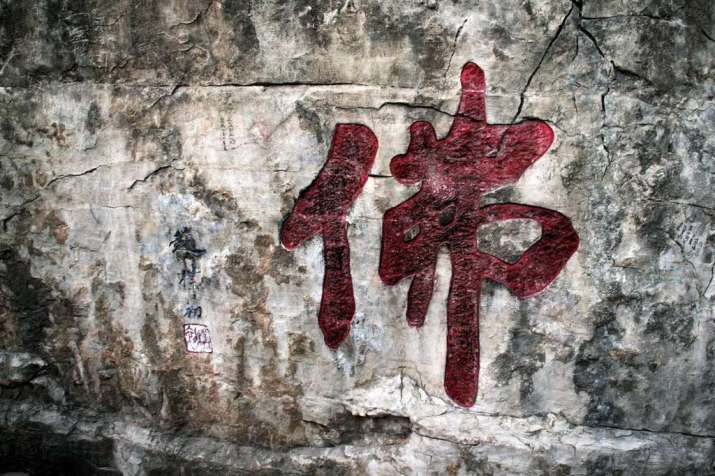 Engraving of the Chinese character for "Buddha" in Jinan by Zhao Puchu. From panoramio.com
Engraving of the Chinese character for "Buddha" in Jinan by Zhao Puchu. From panoramio.comIt is never easy to provide an introductory overview of what we call Buddhism in China. Afterall, the term “Chinese Buddhism” does not have geographical boundaries and is not restricted to Sinophone communities. Chinese Buddhist communities also exist outside of the People’s Republic, complicating what it means to be a Chinese Buddhist.
Nor does “Buddhism in China” capture specifically the Mahayana schools that came to shape the philosophy, culture, and interior being of the Chinese people (and not just the ethnic Han majority). There also are flourishing Vajrayana and Theravada communities across the country, but their story is for another day.
Here we will focus on what would become the Chinese expression of Mahayana Buddhism: an expression that would irrevocably influence Mahayana Buddhism across East Asia.
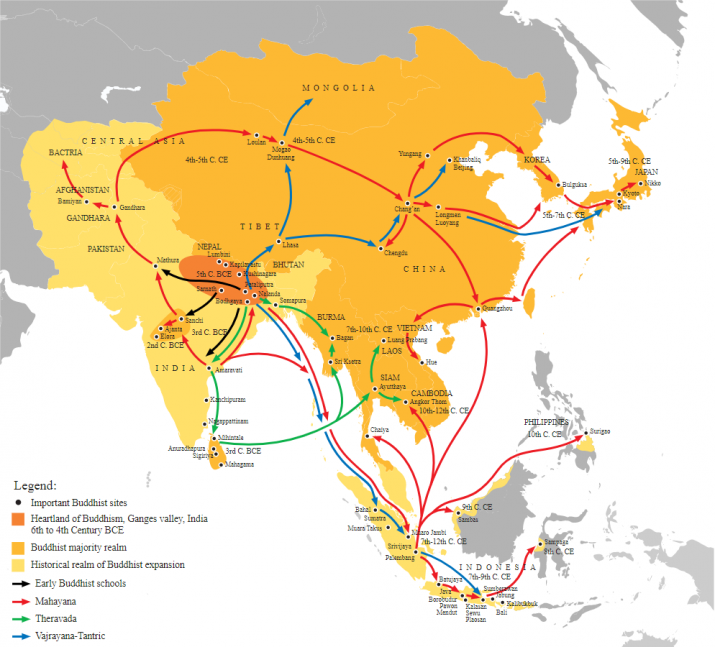 The early expansion of Buddhism in Asia. From wikimedia.org
The early expansion of Buddhism in Asia. From wikimedia.orgThe Classical Age: Teachings Trickling East
Mahayana Buddhism as a spiritual movement cannot be divorced from its greater historical context. It was the expansionist reign of Emperor Wu (156–87 BCE) that pushed the borders of the Han empire into Central Asia, enabling contact with the Eurasian steppe cultures and peoples living between the civilizations of India, Persia, and China.
The mystic magnetism of the “West” has fascinated Chinese rulers for millennia. It inspired King Mu of Zhou’s journey to see the mysterious Queen Mother of the West, before giving way to a hardheaded desire to seize the corridors of Central Asia. No longer were the borderlands of China a blurry barrier between the known world and the magical sphere of the Kunlun Mountains. Instead, through the Silk Road, the Chinese started interacting with people like the Sogdians, Indians, and Parthians. These cultures had, to some extent, contact with the dispensation of a chieftain’s son-turned-wanderer—the Buddha. This traceless man, through apparently a charismatic personality and compelling teacher, set a world religion into motion some 500 years before his teachings reached China.
The Kushans, in particular, were instrumental in transmitting the Buddhist teachings and memory into Luoyang, the capital of classical China. Their emissaries were camel-riding merchants and caravan traders accompanied by monks, such as Lokashema (b. 147 CE), An Shigao (fl. c. 148–80 CE), and many more. Our story therefore begins not with a booming revelation from above, but with a hesitant trickle of teachers and translators from China’s west.
Buddhism was known among the Chinese imperial court by the Han dynasty (206 BCE–220 CE), but did not find a stable ideological foothold until the dynasty collapsed into three kingdoms—the states of Shu, Wu, and Wei—engaged in a cutthroat civil war—otherwise known as the Three Kingdoms period (184/220–280 CE). For the intellectual class, the state ideology of Confucianism had failed. Intellectuals, artists, and poets looked elsewhere for guidance on how to stabilize society and cultivate the individual, including the native alternative of Daoism and the foreign message of Buddhism.
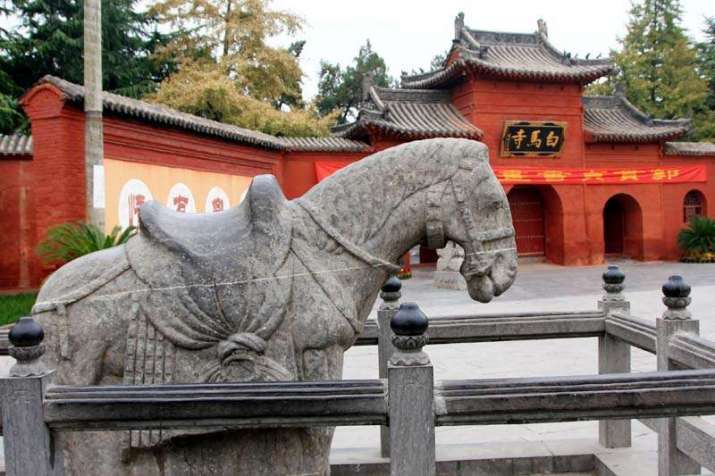 White Horse Temple in Luoyang. From liujingyou100.blog.sohu.com
White Horse Temple in Luoyang. From liujingyou100.blog.sohu.comOne major appeal of Buddhism was that it had a detailed and comprehensive schema of salvation after death, as opposed to Confucianism’s intricate rules and guidelines for living a moral life. We know that Ze Rong (d. 195), a minor warlord who skirmished with the infamous but legendary Han chancellor and king of Wei, Cao Cao (155–220), claimed to be a follower of Buddhism. Therefore, we know that by this time Buddhism was known among statesmen and warlords.
Various schools of Buddhist thought, originating from the Pure Land on Mount Lu with early Pure Land propagator Huiyuan (334–416), started to take shape and take root in the empire, along with the originally Kharosthi Vinaya of the Dharmaguptaka sect. The Dharmaguptaka Vinaya became the Buddhist law code accepted by all Chinese temples and monasteries, and, as a result, the Chinese bhikkhuni sangha did not suffer an institutional break like in the Theravada Vinaya in the 11th century.
In hindsight, this gave Chinese Mahayana Buddhism in a significant advantage over the Theravada and Vajrayana vehicles when it came to ordaining women. While the movement to ordain women in the Theravada tradition began in the 20th century, Vinaya conservatives argued that the lineage had died out and that the best they could hope for was dual ordination under a Dharmaguptaka-aligned institution: very often, a Chinese or Korean temple.
If any social or spiritual force proved that China was open to foreign influence, it was Buddhism. The Northern Wei (386–535) even declared themselves to be the rightful monarchs of China, in 460, because they were representatives of the Buddha. Many historians credit the consolidation of Buddhist influence in the Chinese polity to them.
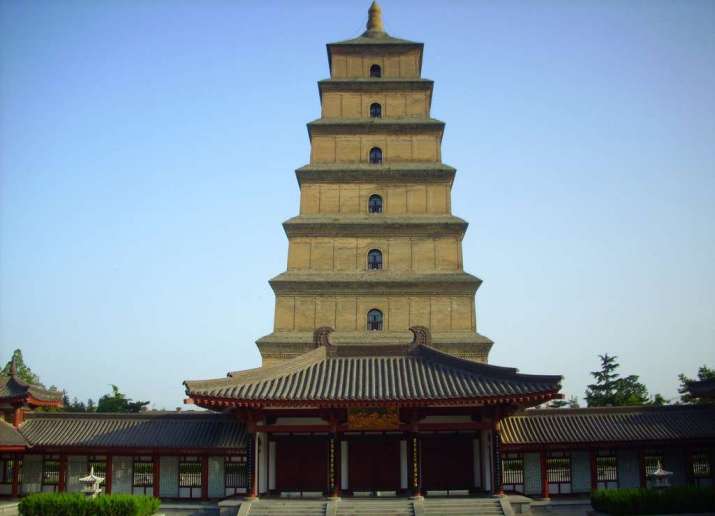 Big Wild Goose Pagoda, Xi'an. From yallabook.com
Big Wild Goose Pagoda, Xi'an. From yallabook.comMedieval Monks and Monarchs: Consolidation and Sinicization
Once it was introduced, Buddhism would never leave China, not even during periods when the Chinese writers and poets themselves feared that Buddhism was under fatal pressure. From the growth of Buddhist schools during the Tang dynasty (618–907) to periods of disunity or splintering such as during the Northern and Southern dynasties (420–589), we can see schools of Buddhist flourishing and experimenting with local culture—essentially, a slow but sure process of the Sinicization of Buddhism.
It is true that Emperor Wuzong’s Great Anti-Buddhist Persecution in 845 marked a low point in Buddhist fortunes. Yet while some schools lost their institutional power, most notably and sadly the Huayan school, the common stereotype that all the schools lost their influence save the Chan and Pure Land factions is a misconception. Even the idea that Buddhism did not offer much intellectual vigor or philosophical innovation during the Song (960–1279), Yuan (1271–1368), and Ming (1368–1644) is a long-standing misapprehension. During each of these dynasties, Buddhist philosophy interacted with shifting social trends, other intellectual traditions like Neo-Confucianism, and foreign and native political forces to endure and flourish in the Chinese cultural, religious, and social landscape.
It is these historical misconceptions (along with many more contemporary and philosophical stereotypes of Chinese Buddhism) that we will be questioning throughout this project. We will aim to propose thoughtful, inquisitive, but most of all interesting narratives that help us look at Buddhism in China with fresh eyes.
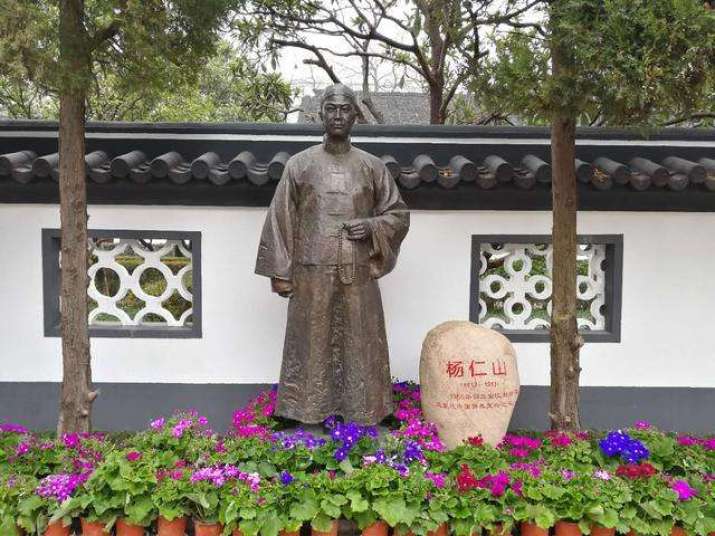 Memorial to Yang Wenhui (his courtesy name, Renshan, is listed). From rufodao.qq.com
Memorial to Yang Wenhui (his courtesy name, Renshan, is listed). From rufodao.qq.comFrom the early modern period to contemporary times: upheaval and adaptation
There are many problems with the idea that Buddhism was “asleep” during the Qing era (1644–1911). There was plenty of Buddhist activity during that time, both at the local level as well as in the imperial court. Still, it is fair to say that the issues that plagued the dynasty from the 1840s onward reflected the growing sense of urgency for Buddhism to “modernize,” particularly in response to the growing number of Christian missionaries in the coastal treaty ports and growing cities of China.
The goal of these reformers was not only to rejuvenate Buddhism, but also for Buddhism to play some part in invigorating the Chinese nation. The names of these reformists are now renowned among Chinese Buddhists, each representing an original way of approaching Buddhist thinking. With the onset of the printing press and modern, politically engaged journalism, Yang Wenhui (1837–1911) was one of the first householders (lay believers of Buddhism, jushi 居士) to open Buddhist publishing houses (most famous among them the Jinling Sutra Publishing House) that circulated Buddhist sutras and reading materials to a wider audience. Sometimes called the father of the Buddhist “renaissance” in China, he imported more than 300 Buddhist texts lost to China with the help of Japanese priest Nanjo Bunyu (1849–1927). Among such texts were the writings of Master Shandao, the de facto founder of Pure Land Buddhism.
Master Taixu (1890–1947), one of Yang Wenhui’s most important protégés, believed that ritualistic obsessions were corseting intellectual development and laid the foundations of Humanistic Buddhism, a movement that would prove immensely influential in the Sinophone world. Another student of Yang’s, the revolutionary Zhang Binglin (1868–1936), was immersed in the dialectic of Yogacara Buddhism, and saw history as an unconscious process of drives that reflected the store-consciousness (alaya-vijnana). Later Chinese academics drew on Zhang’s Yogacara dialectic to provide a theoretical framework for the failures of capitalism as well as Chinese philosophy itself.
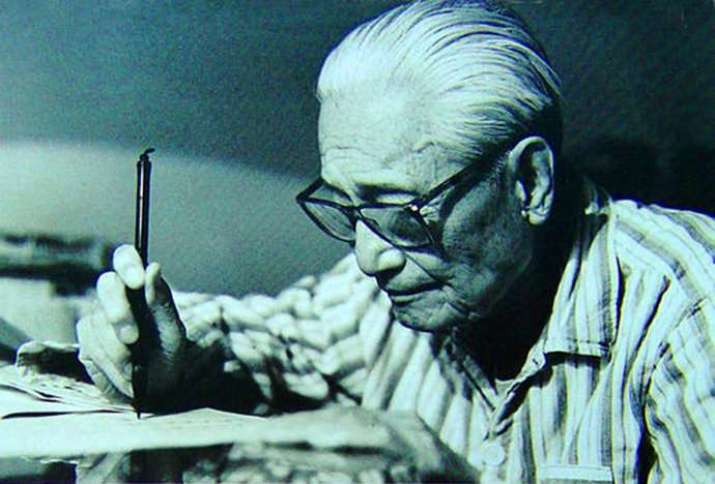 Zhao Puchu. From blog.sina.com.cn
Zhao Puchu. From blog.sina.com.cnSocial and political reform turned to revolution with the establishment of the Republic of China, the Second Sino-Japanese War and World War II, and finally the Communist victory. Buddhist development was not totally halted but significantly hindered by the Cultural Revolution, which impacted all religious traditions adversely. From the wreckage emerged new generations of Buddhist thinkers as well as members of the old guard, like the jushi Zhao Puchu (1907–2000), who served as president of the Buddhist Association of China from 1980 until his death in 2000, and was one of the most successful advocates of Sino-Japanese friendship via Buddhist ties.
Today, Buddhism faces new challenges and opportunities in a globalized world and a Chinese nation-state that has an unprecedented stake in the world as the second-largest economy. We’ve hastily stormed through two millennia of Buddhism’s history in this country, but it is not our intention to close the book on this rich and varied story so soon. Rather, we invite you to stay a while longer as we delve deeper into what are defining hallmarks of Chinese Buddhism.
Related features from Buddhistdoor Global
Buddhistdoor View: Mahayana Buddhism’s Unique Place in History and Chinese Civilization
Monastic Seminaries and the Chinese Dream, Part One: Polity, Power, and Persuasion
Monastic Seminaries and the Chinese Dream, Part Two: United Fronts and Common Goals
This article is part of “Buddhism in the People’s Republic,” a special project focusing on the schools of Mahayana Buddhism in contemporary China. Through this project, Buddhistdoor Global’s editorial team and expert contributors aim to provide a concise, insightful, and informative overview of the history of contemporary Chinese Buddhism, and the modern practices and influences that are shaping the changing face of modern China. Return to Buddhism in the People’s Republic














